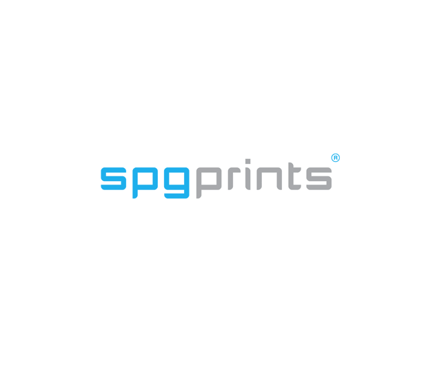Understanding Your Current and Future Printing Needs
Consider the types of fabrics and designs your customers are asking for. Are they looking for complex geometric patterns, intricate floral motifs, or vibrant, high-resolution images? Understanding these requirements will help you identify the right technology, whether it's reactive, acid, or pigment printing. Each type of printing technology has its own strengths and is suited to different kinds of fabrics and design complexities. For instance, reactive printing is excellent for achieving bright, vivid colors on natural fibers, while acid printing is ideal for silk and nylon, offering sharp and detailed prints. Pigment printing, on the other hand, is versatile and works well on a variety of fabrics, providing excellent color fastness and durability.
Additionally, consider the speed and volume of production. A printer that can handle higher speeds and larger fabric widths will enable you to meet market demands more efficiently. High-speed printers can significantly reduce production time, allowing you to fulfill large orders quickly and maintain a competitive edge. Moreover, printers capable of handling wider fabric widths can increase your production capacity, enabling you to take on more extensive projects and diversify your product offerings. By carefully evaluating these factors, you can ensure that your printing technology aligns with your business goals and customer expectations, ultimately driving growth and success in a competitive market.
Evaluating Costs and Benefits of Digital Fabric Printing
Investing in digital fabric printing technology is a significant financial commitment, and evaluating the costs and benefits is crucial. The initial outlay for a high-quality digital printer can be substantial, but the long-term benefits often outweigh the costs. Digital printers offer faster turnaround times, higher quality prints, and greater versatility in design, all of which can lead to increased customer satisfaction and loyalty.
Moreover, digital printing can reduce waste and lower production costs in the long run. Traditional printing methods often require long setup times and significant material waste. Digital printers, on the other hand, can start printing almost instantly, reducing downtime and material costs. Additionally, the ability to print on-demand means you can produce smaller batches, minimizing the risk of overproduction and excess inventory.
Selecting the Right Digital Printer for Versatility and Quality
Choosing the right digital printer is a balancing act between versatility and quality. You need a machine that can handle various types of fabrics and produce high-quality prints at a competitive cost. SPGPrints' Jasmine digital printer, for example, offers the perfect balance between investment and quality. It supports reactive, acid, and pigment printing, allowing you to cater to a wide range of customer needs.
Jasmine's ability to print up to 2400 dpi on fabrics up to 1800 mm in width ensures that you can produce sophisticated patterns and rich colors continuously. This versatility enables you to expand your product offerings and attract new customers. Additionally, Jasmine helps minimize ink usage and cut waste, aligning with the growing demand for sustainable fabric printing solutions.
Integrating Sustainability into Your Digital Printing Strategy
Sustainability is no longer a luxury but a necessity in today's market. Customers are increasingly looking for eco-friendly options, and integrating sustainability into your digital printing strategy can give you a competitive edge. Digital printing technologies like pigment and sublimation printing use less water and energy compared to traditional methods, reducing your ecological footprint.
Investing in sustainable printing solutions can also lead to cost savings in the long run. By minimizing waste and reducing energy consumption, you can lower your operational costs and improve your bottom line. Furthermore, adopting sustainable practices can enhance your brand image, attracting environmentally conscious customers and helping you build long-term relationships.
Maximizing ROI through Strategic Partnerships and Support
Maximizing your return on investment (ROI) in digital fabric printing requires more than just purchasing the right equipment. It's essential to form strategic partnerships with suppliers that offer robust support and expertise. This ensures minimal downtime and helps you get the most out of your investment.
SPGPrints, for instance, provides extensive support through its network of specialists with textile printing know-how. This support can be invaluable in troubleshooting issues, optimizing your printing processes, and ensuring consistent quality. Partnering with a supplier that offers comprehensive support can help you achieve a quicker ROI and sustain long-term growth.
Case Studies: Successful Digital Printing Investments
Real-world examples can offer valuable insights into the benefits of digital fabric printing. Take the case of a mid-sized printing company that invested in SPGPrints' Jasmine printer. By upgrading their equipment, they were able to meet increasing customer demands for high-quality prints and faster turnaround times. The versatility of the Jasmine printer allowed them to expand their product offerings, attracting new customers and boosting their revenue.
Another example is a large-scale fabric printing business that prioritized sustainability. By integrating digital pigment printing into their operations, they significantly reduced water and energy consumption. This not only lowered their operational costs but also enhanced their brand image, attracting eco-conscious customers and driving long-term growth.
Conclusion
Digital fabric printing offers a multitude of benefits, from higher quality and faster production to reduced waste and increased versatility. By understanding your current and future needs, evaluating costs and benefits, and selecting the right printer, you can strategically balance investment and returns. Integrating sustainability into your strategy and forming strategic partnerships will further maximize your ROI, setting your business up for sustained growth and success.
If you're ready to explore the possibilities of digital fabric printing, consult with a specialist to find the best solution tailored to your needs. With the right approach, you can step into the future of fabric printing and stay competitive in an ever-evolving market.




